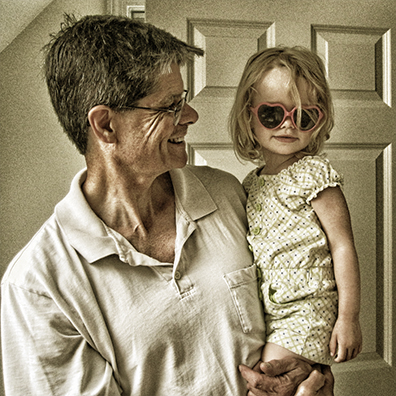The Criers’ ABCs. “The Blue Hour,” Nov. 10, Jordan Hall.
The Criers. Photograph Yoon S. Byun.
Proximity creates meaning. Even for things—ideas, objects, persons—that have no inherent connection.
Carolyn Forché’s poem “On Earth,” the longest in a linked volume entitled “Blue Hour,” yokes disparate images with the headlong rush of a catalog. Following an abecedary form—discrete lines, beginning with A and running through Z—Forché’s flurry of images and ideas without transition captures the final moments of someone’s life. Ragged, disconnected moments, some with meaningful implications, others trivial, inscrutable.
“On Earth,” commissioned as a song cycle by A Far Cry (their title: “The Blue Hour”) from a consortium of five composers, and staged Friday evening at Jordan Hall as part of a ten-city tour, is impeccably musical. Evocative images, floating past, letting themselves get linked in the reader’s mind, and in this case the listener’s ear, through sound.
The five composers—Sarah Kirkland Snider, Shara Nova, Caroline Shaw, Angélica Negrón, Rachel Grimes—represent some of the strongest voices at work in contemporary music, through their own compositions, and through performances of the ensembles that interpret those compositions. Mezzo/vocalist Luciana Souza was the featured soloist, and played no small part in leading the performance.
The entire project is ambitious, somewhat unwieldy. Five composers? A conductor-less ensemble? With direction from Souza, who served as much more than an interpreter of the text, “The Blue Hour” veers away from Forché’s end-of-life litany and develops its own intensity.
Forché’s poem—long, rhythmically lulling, lacking crescendo—has a different impact than the Criers’ “The Blue Hour,” which is episodic, emphatic, restlessly inventive.
The verses in Forché’s poem are democratic, equally random or evocative. The Criers’ “The Blue Hour” is by turns introspective, dramatic, engaging and lulling, the settings distinct, reflecting the composers’ voices. Of course: “Winterreise” or “Die schöne Müllerin” become the voice of Schubert musically, not Wilhelm Müller.
Souza performed with a microphone, although not for any vocal effects. She sang, she whispered, she spoke, she chanted, she even laughed her way through some verses. Some sections were treated melismatically, some omitted altogether and instead interpreted instrumentally. Souza’s is not a perfect instrument, but her artistry gathered up everyone—fellow performers, the audience—in its intensity. So what if a few pitches were not perfectly rounded, or some vibrato went unachieved. Souza wove the wild energy of the piece into a tapestry.
The Criers also pitched in vocally, reciting some passages, singing softly as a unison chorus in others, most notably in Caroline Shaw’s concluding Amen, a canon set to the words “All of this must remain.”
There are many specific musical references in the poem, and the composers exploited them. Shaw’s direct quotation from Bach, where Forché invokes “fragments from the Second Brandenburg.” Her minimalist treatment (Philip Glass?) to the verses “older than clocks…older than glass younger than music.” Shara Nova’s viola solo at “night-voiced viola”—part of a beautiful aria, almost a torch song, beginning with the verses “nevertheless, noumenon, november.”
The composers had worked out modulations, seemingly, but otherwise the varied settings—some just one word, most of them a verse of half-a-dozen lines or so—alternated with no overarching regimen.
One always wonders if a premiere will survive its commissioning, and live for other ensembles, or in other settings. It is hard to image “The Blue Hour” re-imagined as a more programmable work—far too alive instrumentally to ever be reduced for piano and voice. But it makes for a bold, and hopefully permanent, part of the Criers own repertory. Just keep Souza’s number handy.
A Far Cry performs “Blue Hour” in Iowa City Nov. 16, in Durham, NC Nov. 18, and in Tallahassee Nov. 21. afarcry.org; 617-553-4887




